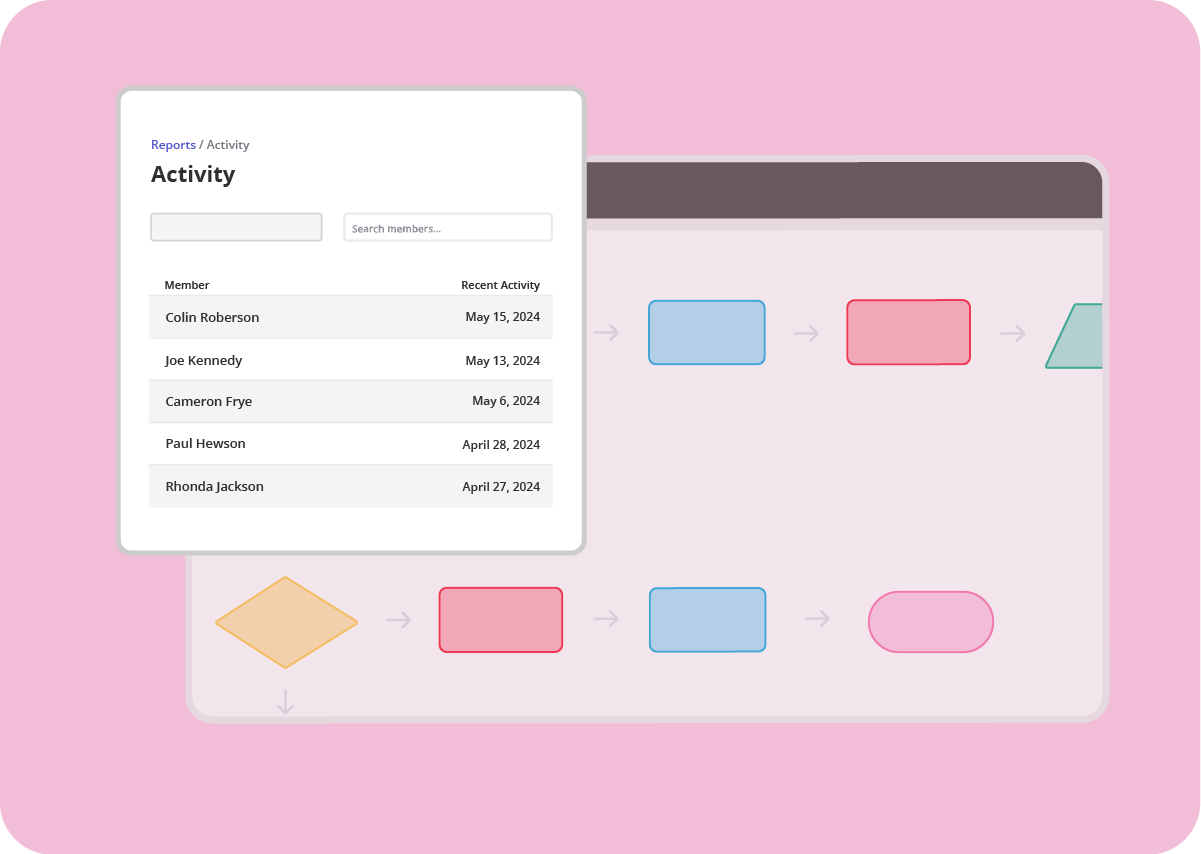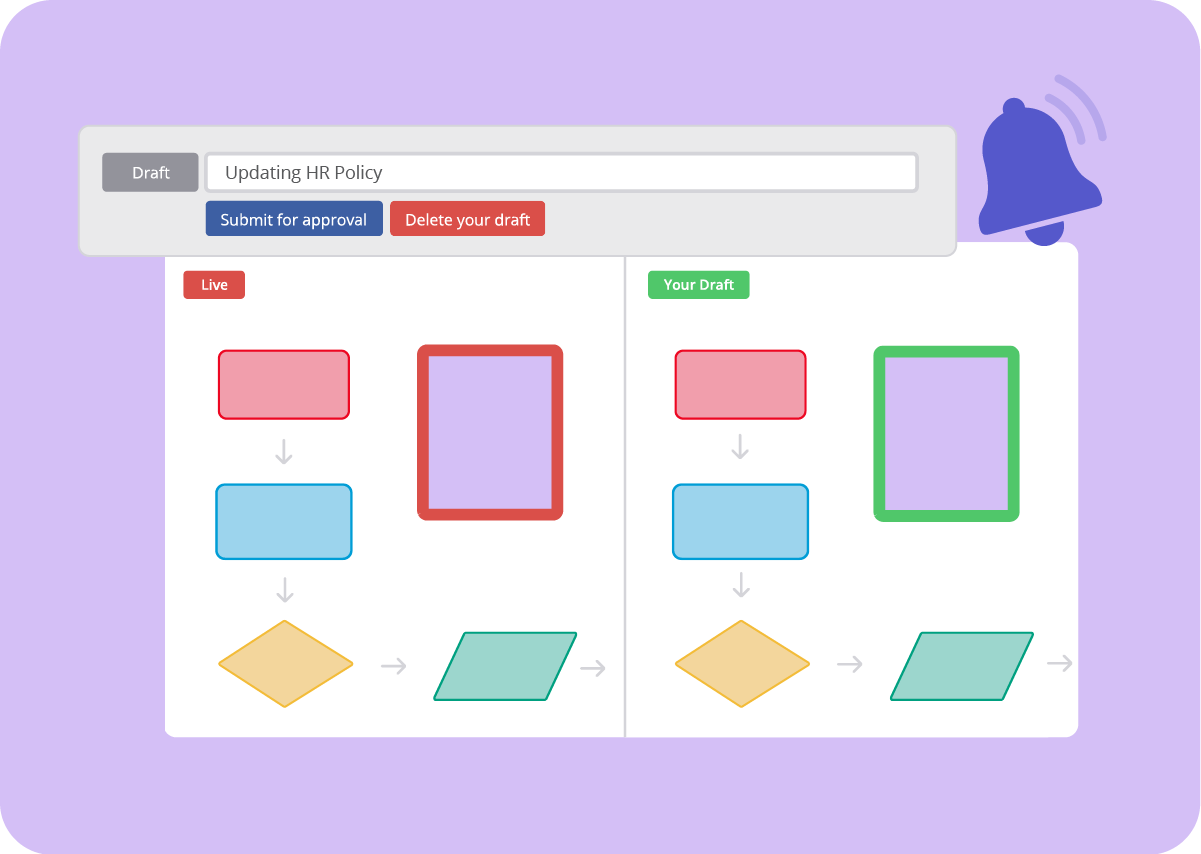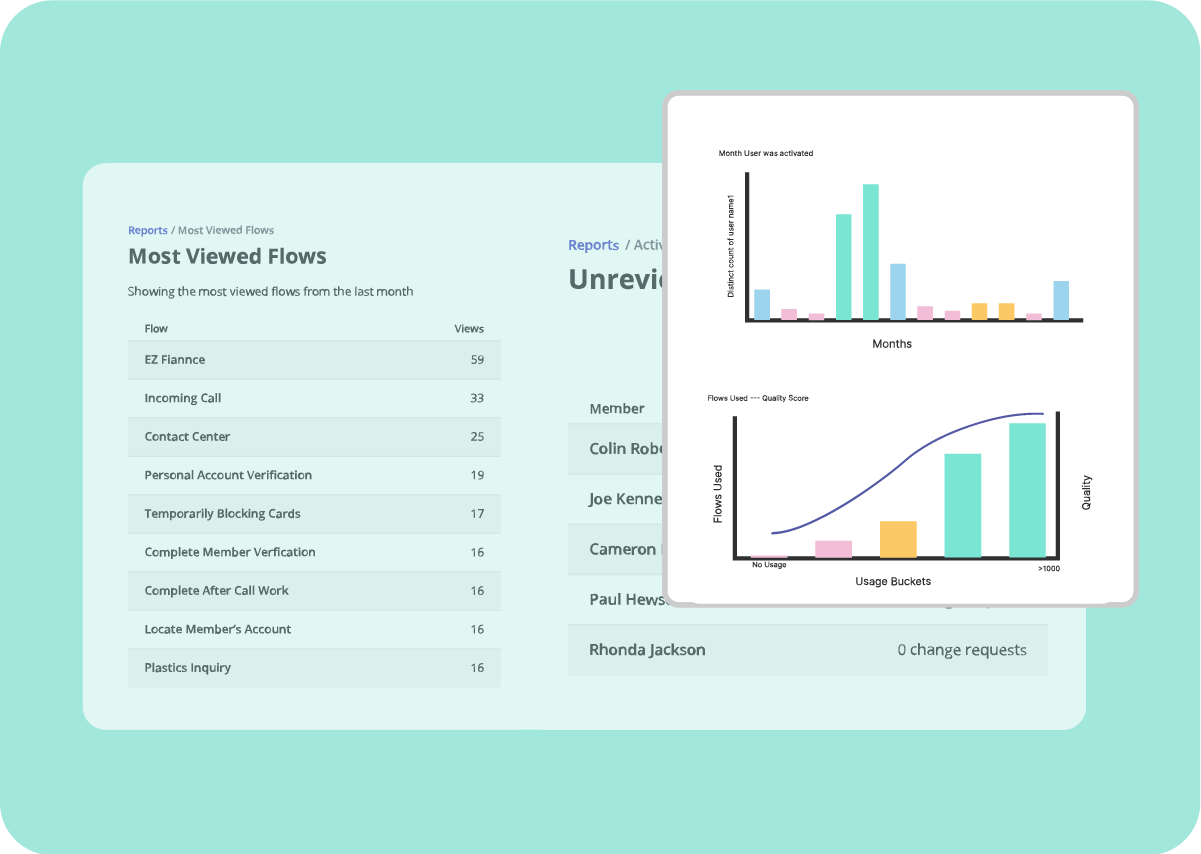10 Essential Knowledge Management Metrics for Success

Key Takeaways
- Track knowledge management metrics such as creation, usage, sharing, and transfer to evaluate effectiveness.
- Measure knowledge application and maintenance to ensure relevant and up-to-date information supports decisions.
- Monitor knowledge culture and engagement to promote collaboration and continuous learning.
Knowledge management metrics provide crucial data points to evaluate the performance, productivity, and effectiveness of a company's knowledge management system. They serve as benchmarks to help organizations understand whether or not their knowledge management efforts are meeting identified objectives and goals.
A knowledge management system can involve tools, processes, and practices designed to create, acquire, capture, share, and use knowledge to enhance learning and performance in organizations. An effective knowledge management system has the potential to boost employee productivity by 25%, therefore it is vital to have the necessary metrics in place to assess and fine-tune its performance continually.
What are knowledge management metrics?
Knowledge management metrics are quantifiable assessments that measure the effectiveness and performance of an organization's knowledge management initiatives.
These metrics offer insights into the level of knowledge dissemination, use or appropriation within an organization. Factors such as the amount of information being shared, the quality of knowledge, and its impact on performance are paramount in this analysis. This analysis helps organizations identify strengths and weaknesses, allowing them to evolve and adapt their strategies for optimal performance.
Knowledge management metrics deal with the efficiency with which knowledge is managed within the organization. This involves measuring how knowledge is captured, organized, shared, and utilized. Higher efficiency often correlates with higher productivity and innovation, with effective knowledge management becoming a crucial aspect of business operations.
Why are knowledge management metrics important?
Knowledge management metrics play a pivotal role in any organization. They assist in determining the success ratio of knowledge management initiatives, tracking the progress of procedural knowledge, knowledge sharing, improving employee productivity, and evaluating the return on investment in knowledge management.
Businesses today are operating in a world inundated with data. To gain a competitive edge, businesses must not only manage this data effectively but also extract useful information from it. Therefore, knowledge management metrics stand as an imperative tool for every organization.
- 75% of organizations consider KM crucial for corporate strategy.
- Metrics allow organizations to track progress, evaluate ROI, and improve knowledge flows.
- They identify gaps in knowledge sharing and help design strategies to close them.
- In today’s data-rich environment, using KM metrics provides a competitive edge.
What are the knowledge management metrics to measure and monitor?
There are several metrics that can be employed to evaluate the effectiveness of a company’s knowledge management, 10 of such are detailed below.
1. Knowledge creation metrics
These metrics gauge the organization's capacity to generate new ideas, innovate, and produce valuable content. Tracking the number of new ideas generated, patents filed, or research papers published provides insights into the organization's innovative potential and its ability to stay competitive in the market.
Examples of knowledge creation metrics
- Number of new ideas generated
- Rate of innovation within the organization
- Quantity of new content produced
- Diversity of sources contributing to knowledge creation
- Percentage of employees engaged in idea generation
- Number of patents filed
- Volume of research papers published
- Success rate of pilot projects
2. Knowledge usage metrics
These metrics track the utilization of knowledge resources within the organization. By measuring frequency of usage, number of users accessing knowledge resources, and impact on productivity, organizations can assess the effectiveness of their knowledge management efforts and identify areas for improvement.
Examples of knowledge usage metrics
- Frequency of knowledge utilization
- Number of users accessing knowledge resources
- Time spent on knowledge-intensive tasks
- Effectiveness of knowledge in solving problems
- User feedback on the usefulness of knowledge resources
- Adoption rate of knowledge-driven practices
- Return on investment in knowledge utilization
- Impact of knowledge usage on productivity

3. Knowledge sharing metrics
These metrics assess the effectiveness of knowledge sharing initiatives within the organization. By measuring participation rates in knowledge sharing events, usage of collaboration platforms, and feedback received on shared knowledge, organizations can evaluate the extent to which knowledge is disseminated and utilized across departments and teams.
Examples of knowledge sharing metrics
- Number of knowledge sharing sessions conducted
- Participation rate in knowledge sharing events
- Usage of internal collaboration platforms
- Number of communities of practice formed
- Feedback received on shared knowledge
- Rate of adoption of shared best practices
- Cross-departmental collaboration frequency
- Quality of interactions in knowledge sharing forums
4. Knowledge capture metrics
These metrics focus on capturing critical knowledge assets within the organization. By evaluating the efficiency of knowledge capture processes, completeness of documentation, and alignment with organizational goals, businesses can ensure that valuable insights and expertise are systematically documented and preserved for future use.
Examples of knowledge capture metrics
- Percentage of critical knowledge captured
- Efficiency of knowledge capture processes
- Rate of documentation completion
- Quality of captured knowledge (accuracy, relevance)
- Utilization of knowledge capture tools
- Feedback on captured knowledge from users
- Alignment of captured knowledge with organizational goals
- Level of redundancy in captured knowledge
5. Knowledge retrieval metrics
These metrics measure the ease and effectiveness of accessing relevant information within the organization. Factors such as search success rate, user satisfaction with retrieval systems, and accessibility across devices help organizations evaluate the efficiency of their knowledge repositories and information retrieval mechanisms.
Examples of knowledge retrieval metrics
- Speed of access to relevant information
- Search success rate
- Number of searches per user
- User satisfaction with retrieval systems
- Time spent searching for information
- Rate of information retrieval from various sources
- Usage patterns of knowledge repositories
- Accessibility of knowledge across devices and locations
6. Knowledge application metrics
These metrics assess how effectively knowledge is applied in decision-making and problem-solving processes. By measuring the impact of applied knowledge on business outcomes, efficiency improvements, and alignment with an organization’s knowledge management strategy, businesses can determine the value derived from leveraging internal expertise and insights.
Examples of knowledge application metrics
- Rate of knowledge application in decision-making
- Number of successful knowledge transfers
- Efficiency improvements resulting from applied knowledge
- Impact of knowledge application on business outcomes
- Feedback on the usefulness of applied knowledge
- Alignment of applied knowledge with organizational strategy
- Time taken to implement new knowledge into practice
- Rate of knowledge application in problem-solving
7. Knowledge maintenance metrics
These metrics focus on ensuring the currency and relevance of knowledge assets over time. By tracking the frequency of updates, identification and removal of outdated information, and compliance with regulatory changes, organizations can maintain the quality and reliability of their knowledge repositories.
Examples of knowledge maintenance metrics
- Currency of knowledge repositories
- Rate of knowledge updates and revisions
- Percentage of outdated knowledge identified and removed
- Maintenance costs of knowledge systems
- User feedback on the relevance of maintained knowledge
- Compliance with regulatory changes in knowledge management
- Performance of knowledge maintenance workflows
- Impact of maintained knowledge on organizational resilience

8. Knowledge culture metrics
These metrics evaluate the organizational culture surrounding knowledge management. By assessing employee engagement, perception of knowledge importance, leadership support, and knowledge-related training participation rates, organizations can cultivate a culture that values knowledge sharing, collaboration, and continuous learning.
Examples of knowledge culture metrics
- Employee engagement in knowledge initiatives
- Perception of knowledge importance within the organization
- Frequency of knowledge sharing behaviors
- Alignment of knowledge culture with organizational values
- Leadership support for knowledge management
- Recognition of knowledge contributions
- Knowledge-related training participation rates
- Level of trust in shared knowledge
9. Knowledge transfer metrics
These metrics measure the effectiveness of transferring knowledge from one part of the organization to another. By evaluating success rates, speed, quantity, and impact on project outcomes, organizations can ensure that expertise and best practices are effectively disseminated and applied across teams and departments, regardless of the type of knowledge to be transferred.
Examples of knowledge transfer metrics
- Success rate of knowledge transfer processes
- Speed of knowledge transfer between teams
- Quantity of knowledge transferred
- Feedback on knowledge transfer effectiveness
- Utilization of knowledge transfer tools and methodologies
- Impact of knowledge transfer on project outcomes
- Knowledge retention after transfer
- Alignment of transferred knowledge with recipient need
10. Knowledge evaluation metrics
These metrics assess the quality and impact of evaluated knowledge assets. By evaluating accuracy, relevance, efficiency of evaluation processes, and impact on decision-making, organizations can ensure that their knowledge assets are reliable, aligned with organizational goals, and contribute to improved performance.
Examples of knowledge evaluation metrics
- Accuracy of knowledge assessments
- Relevance of evaluated knowledge to business objectives
- Feedback on the usefulness of evaluation methods
- Alignment of evaluation criteria with organizational goals
- Efficiency of knowledge evaluation processes
- Improvement in decision-making based on evaluation results
- Adoption rate of recommendations from knowledge evaluations
- Impact of evaluated knowledge on organizational performance

The aforementioned metrics offer an encompassing method of assessing knowledge management with a quantitative perspective. Understanding the relationship between these metrics and their relevancy to your organization will ensure you have a robust, continually improving system.
In Summary: KM Metrics to Measure and Optimize Success
Effective knowledge management requires not only capturing and sharing information but also measuring how well these efforts perform across the organization.
- Knowledge management metrics are essential for measuring the success of your knowledge initiatives across creation, sharing, usage, capture, and transfer.
- Tracking knowledge application, retrieval, and maintenance ensures your organization’s knowledge remains relevant, accessible, and impactful.
- Evaluating knowledge culture and transfer effectiveness supports a collaborative environment that drives innovation and continuous improvement.
- Regular measurement of these metrics helps organizations identify gaps, improve efficiency, and maximize the value of their knowledge management systems.
By systematically monitoring these metrics, organizations can continuously refine their knowledge strategies to achieve better outcomes and sustained growth.
Knowledge management metrics in your organization
Knowledge is an invaluable asset within an organization. To ensure its effectiveness and improve it continuously, it’s crucial to implement knowledge management metrics and monitor them for the seamless functioning of your business.
While the metric selection can vary based on each organization’s unique needs, this array of 10 knowledge management metrics can provide a strong foundational starting point for most organizations to gauge the efficiency of their knowledge management systems.
Understanding knowledge management metrics is fundamental for any organization aiming for success in the constantly evolving and competitive business landscape. To learn how you can use operational reports to track these metrics to review process adherence and uncover opportunities for efficiencies, visit our features page.



